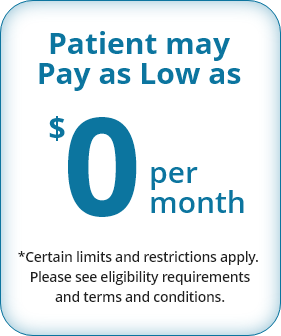INDICATION
GLATIRAMER ACETATE INJECTION is indicated for the treatment of patients with relapsing forms of multiple sclerosis, to include clinically isolated syndrome, relapsing-remitting disease, and active secondary progressive disease, in adults.
IMPORTANT SAFETY INFORMATION
Contraindication: GLATIRAMER ACETATE INJECTION is contraindicated in patients with known hypersensitivity to glatiramer acetate or mannitol
Immediate Post Injection Reactions: Approximately 16% of patients exposed to GLATIRAMER ACETATE INJECTION 20 mg per mL compared to 4% of those on placebo, and approximately 2% of patients exposed to GLATIRAMER ACETATE INJECTION 40 mg per mL compared to none on placebo experienced a constellation of symptoms that may occur immediately (within seconds to minutes, with the majority of symptoms observed within 1 hour) after injection and included at least 2 of the following: flushing, chest pain, palpitations, tachycardia, anxiety, dyspnea, throat constriction, and urticaria. In general, these symptoms have their onset several months after the initiation of treatment, although they may occur earlier, and a given patient may experience one or several episodes of these symptoms. Typically, the symptoms were transient and self-limited and did not require treatment; however, there have been reports of patients with similar symptoms who received emergency medical care.
Chest pain: Transient chest pain (at least one episode) was experienced by 13% of GLATIRAMER ACETATE INJECTION 20 mg per mL patients compared to 6% of placebo patients, and approximately 2% of GLATIRAMER ACETATE INJECTION 40 mg per mL patients compared to 1% on placebo. While some episodes of chest pain occurred in the context of the immediate post-injection reactions that are described, many did not. The temporal relationship of this chest pain to an injection was not always known. The pain was usually transient, often unassociated with other symptoms, and appeared to have no clinical sequelae. Some patients experienced more than one such episode, and episodes usually began at least one month after the initiation of treatment.
Lipoatrophy and Skin Necrosis: At injection sites, localized lipoatrophy and, rarely, injection site skin necrosis may occur. Lipoatrophy occurred in approximately 2% of patients exposed to glatiramer acetate injection 20 mg per mL compared to none on placebo, and 0.5% of patients exposed to GLATIRAMER ACETATE INJECTION 40 mg per mL compared to none on placebo. Lipoatrophy may occur at various times after treatment onset (sometimes after several months) and is thought to be permanent. There is no known therapy for lipoatrophy.
Potential Effects on Immune Response: Because GLATIRAMER ACETATE INJECTION can modify immune response, it may interfere with immune functions. For example, treatment with GLATIRAMER ACETATE INJECTION may interfere with recognition of foreign antigens in a way that would undermine the body’s tumor surveillance and its defenses against infection. There is no evidence that GLATIRAMER ACETATE INJECTION does this, but there has not been a systematic evaluation of this risk.
Hepatic Injury: Cases of hepatic injury, some severe, including liver failure and hepatitis with jaundice, have been reported with GLATIRAMER ACETATE INJECTION. Hepatic injury has occurred from days to years after initiating treatment with GLATIRAMER ACETATE INJECTION. If signs or symptoms of liver dysfunction occur, consider discontinuation of GLATIRAMER ACETATE INJECTION.
Glatiramer Acetate Products and Administration Errors: Medication errors have occurred when glatiramer acetate products are administered with incompatible autoinjectors. Not all glatiramer acetate products have a marked optional compatible autoinjector for administration. Using an optional autoinjector that is not compatible for use with Mylan’s GLATIRAMER ACETATE INJECTION may increase the risk for medication errors, such as dose omission or administration of a partial dose. Ensure the device is compatible for use with the specific glatiramer acetate product by referring to the autoinjector labeling. The availability of compatible autoinjectors for each glatiramer acetate product may change with time.
Common Adverse Reactions: The most common adverse reactions observed in controlled studies of GLATIRAMER ACETATE INJECTION 20 mg per mL (≥ 10% and ≥ 1.5 times higher than placebo) were injection site reactions (ISRs), vasodilatation, rash, dyspnea, and chest pain. The most common adverse reactions observed in controlled studies of GLATIRAMER ACETATE INJECTION 40 mg per mL (≥ 10% and ≥ 1.5 times higher than placebo) were ISRs. ISRs were one of the most common adverse reactions leading to discontinuation of GLATIRAMER ACETATE INJECTION. ISRs, such as erythema, pain, pruritus, mass, edema, hypersensitivity, fibrosis, and atrophy, occurred at a higher rate with GLATIRAMER ACETATE INJECTION than placebo.








